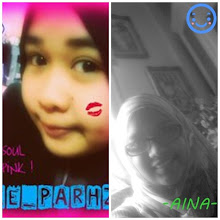A macaron (French pronunciation: [makaˈʁɔ̃])[1][2] is a sweet meringue-based confectionery made with egg whites, icing sugar, granulated sugar, almond powder or ground almond, and food coloring. The macaron is commonly filled with buttercream or jam filling sandwiched between two cookies. Its name is derived from the Italian word maccarone or maccherone.
The confectionery is characterised by its smooth, domed top, ruffled circumference (referred to as the "foot"), and flat base. It is mildly moist and easily melts in the mouth.[3]
Macarons can be found in a wide variety of flavors that range from the traditional (raspberry,chocolate) to the new (truffle, green matcha tea). The fillings can range from jams, ganache, or buttercream. Since the English word macaroon can also refer to the coconut macaroon, many have adopted the French spelling of macaron to distinguish the two items in the English language. However, this has caused confusion over the correct spelling. Some recipes exclude the use ofmacaroon to refer to this French confection while others think that they are synonymous.[4]
small right???
different types of macarons! sure you will like it!
History
Although predominantly a French confection, there has been much debate about its origins.Larousse Gastronomique cites the macaron as being created in 1791 in a convent near Cormery. Some have traced its French debut back to the arrival of Catherine de' Medici's Italian pastry chefs whom she brought with her in 1533 upon marrying Henry II of France.[5]
In the 1830s, macarons were served two-by-two with the addition of jams, liqueurs, and spices. The macaron as it is known today was called the "Gerbet" or the "Paris macaron" and was created in the early 20th Century by Pierre Desfontaines of the French pâtisserie Ladurée,[6]composed of two almond meringue discs filled with a layer of buttercream, jam, or ganachefilling.[6][7]
[edit]Variations
[edit]French regional variations
Several French cities and regions claim long histories and variations, notably Lorraine (Nancy andBoulay), Basque Country (Saint-Jean-de-Luz), Saint-Emilion, Amiens, Montmorillon, Le Dorat,Sault, Chartres, Cormery Joyeuse and Sainte-Croix in Burgundy.
The city of Amiens' macaron consists of almond, fruit and honey, and dates back to 16th century. They are chewier and not as sweet as the Paris macaron.[8]
The city of Montmorillon is well known for its macarons and has a museum dedicated to it. The Maison Rannou-Métivier is the oldest macaron bakery in Montmorillon, dating back to 1920. The traditional recipe for Montmorillon macarons remains unchanged for over 150 years.[citation needed]
The town of Nancy in the Lorraine region has a storied history with the macaron. It is said that the abbess of Remiremont founded an order of nuns called the "Dames du Saint-Sacrement" with strict dietary rules prohibiting the consumption of meat. Two nuns, Sisters Marguerite and Marie-Elisabeth are credited with creating the Nancy macaron to fit their dietary requirements. They became known as the 'Macaron Sisters' (Les Soeurs Macarons). In 1952, the city of Nancy honored them by giving their name to the Rue de la Hache, where the macaron was invented.[9]
[edit]Switzerland
In Switzerland the Luxemburgerli (also Luxembourger) is similar to a French macaron but is said to be lighter and more airy in consistency.[10]
[edit]Japan
Macarons are popular confection known as "makaron" in Japan.[11] There is also a version of the same name which substitutes peanut flour for almond and is flavored in wagashi style, widely available in Japan.
[edit]Korea
Macarons are also popular in South Korea, called as "ma-ka-rong" in Korean pronunciation. To give a rather Asian flavor, they use green tea powder to make Green Tea Macarons.[12]
[edit]Popularity
In Paris, the Ladurée chain of pastry shops has been known for its macarons for about 150 years.[13][14] In France, McDonald's sells macarons in their McCafés, sometimes using advertising that likens the shape of a macaron to that of a hamburger.[13] (The McCafé macarons are produced by Château Blanc, which, like Ladurée, is a subsidiary of Groupe Holder, though they do not use the same macaron recipe.[13])
Outside of Europe, the French-style macaron can be found in Canada[15] and the United States.[16][17][18]
different kinds of filling!!
macarons tower!!
that's it for this week.... goodbye!
posted by, aina <3
thanks to:http://en.wikipedia.org/wiki/Macaron
.jpg)
.jpg)
.jpg)
.jpg)


2 comments:
next time,, dont just copy and paste u'r post from u'r source..
nice post by the way.. :)
cute blog... :D
Post a Comment